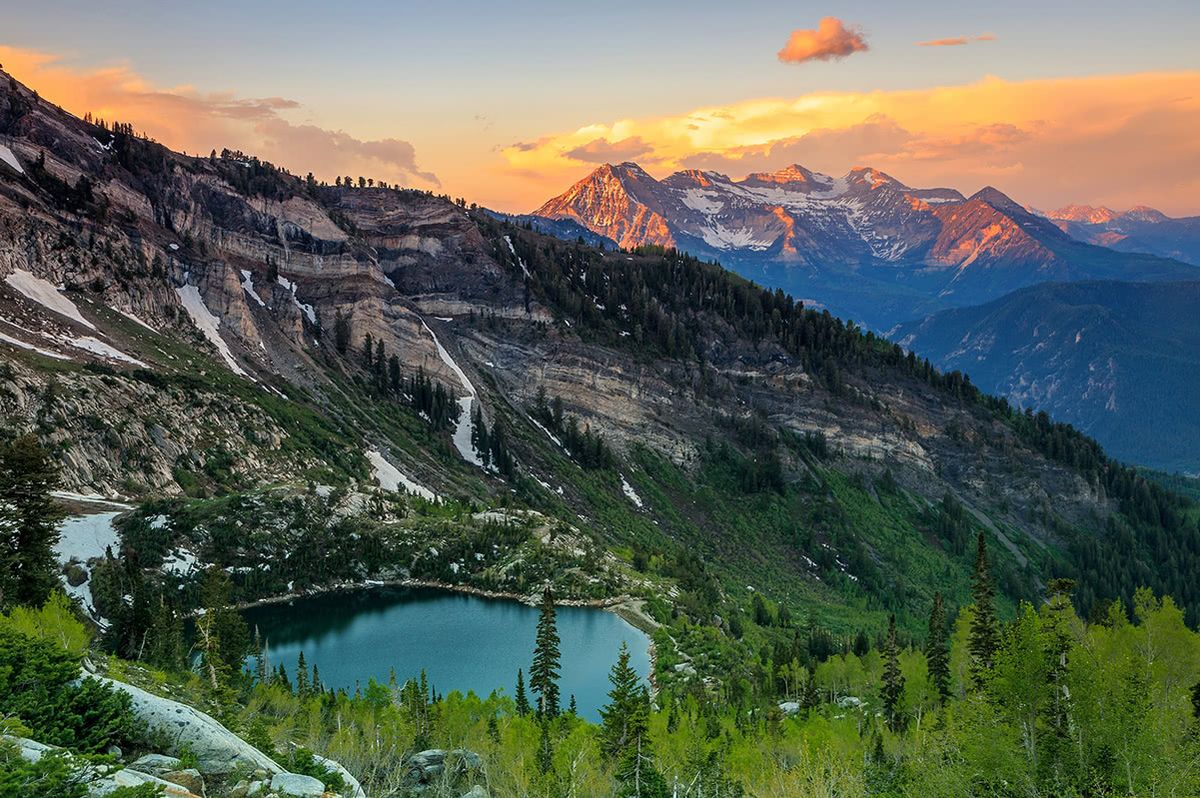Secrets Of Mountain Lion Territories In Utah’s Wasatch Range

Have you ever wondered where mountain lions roam in Utah's Wasatch Range? These majestic creatures, also known as cougars or pumas, are elusive and fascinating. The Wasatch Range, with its rugged terrain and diverse ecosystems, provides an ideal habitat for these big cats. Mountain lions prefer areas with dense vegetation and rocky outcrops, which offer plenty of cover and hunting opportunities. They are solitary animals, marking their territories to avoid conflicts with other lions. Understanding their territories helps in conservation efforts and ensures a balanced ecosystem. Let's dive into the secrets of mountain lion territories in this stunning mountain range.
Secrets of Mountain Lion Territories in Utah's Wasatch Range
Mountain lions, also known as cougars or pumas, are elusive creatures that roam the rugged landscapes of Utah's Wasatch Range. These majestic predators have territories that span vast areas, making them masters of stealth and survival. Let's uncover some of the key territories where these big cats thrive.
1. Big Cottonwood Canyon
Big Cottonwood Canyon is a prime location for mountain lions. The dense forests and rocky outcrops provide perfect cover for these stealthy hunters. Hikers often spot tracks or scat, evidence of their presence.
2. Little Cottonwood Canyon
Just south of Big Cottonwood, Little Cottonwood Canyon offers similar terrain. The steep cliffs and abundant wildlife make it an ideal hunting ground for mountain lions. Skiers and climbers should stay alert, especially during dawn and dusk.
3. Mill Creek Canyon
Mill Creek Canyon is another hotspot. The mix of dense woods and open meadows attracts deer, a primary food source for mountain lions. This area is popular with hikers and mountain bikers, so always be aware of your surroundings.
4. American Fork Canyon
American Fork Canyon, with its rugged terrain and thick vegetation, is a favorite haunt for mountain lions. The area is less frequented by humans, giving these big cats a relatively undisturbed habitat.
5. Provo Canyon
Provo Canyon's diverse ecosystem supports a healthy population of mountain lions. The Provo River and surrounding forests offer ample prey and cover. Fishermen and campers should be cautious, especially in remote areas.
6. Ogden Canyon
Ogden Canyon, located to the north, is another territory where mountain lions roam. The canyon's mix of cliffs, forests, and water sources creates a perfect environment for these predators. Keep an eye out for signs of their presence while exploring.
7. Logan Canyon
Logan Canyon, further north, is known for its scenic beauty and wildlife. Mountain lions here take advantage of the canyon's varied landscape, hunting deer and other animals. Hikers and nature enthusiasts should stay vigilant.
8. Parleys Canyon
Parleys Canyon, near Salt Lake City, is a lesser-known but significant territory for mountain lions. The canyon's proximity to urban areas means encounters are rare but not impossible. Always be prepared when venturing into this area.
9. Emigration Canyon
Emigration Canyon, with its historical significance and natural beauty, also serves as a mountain lion habitat. The mix of open spaces and wooded areas provides ample hunting grounds. Visitors should remain cautious, especially during early morning or late evening.
10. City Creek Canyon
City Creek Canyon, close to downtown Salt Lake City, is a surprising yet important territory for mountain lions. The canyon's lush vegetation and water sources attract prey, making it a suitable habitat for these elusive predators. Urban explorers should be aware of their surroundings.
Mountain lions are an integral part of Utah's Wasatch Range ecosystem. Understanding their territories helps ensure both human safety and the preservation of these magnificent creatures.
Understanding Mountain Lion Territories
Mountain lions in Utah's Wasatch Range have unique territories shaped by food availability, terrain, and human activity. These big cats prefer areas with dense vegetation and rugged landscapes, which offer cover and hunting opportunities. Human encroachment and environmental changes can disrupt their habitats, leading to conflicts.
Respecting these territories helps ensure the survival of mountain lions and maintains the balance of the ecosystem. Hikers and outdoor enthusiasts should stay aware of their surroundings and follow guidelines to minimize encounters. By understanding and respecting mountain lion territories, we can coexist with these majestic creatures and preserve the natural beauty of the Wasatch Range.
Exploring these territories offers a glimpse into the lives of one of North America's most elusive predators. The more we learn, the better we can protect both the mountain lions and their habitats for future generations.

